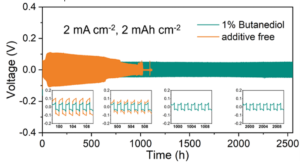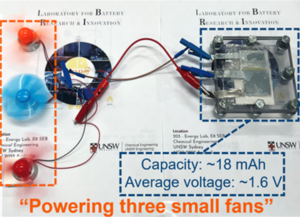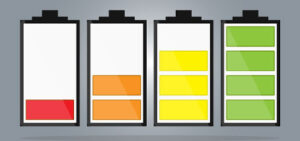
Dr Priyank Kumar, FLEET Chief Investigator, UNSW

Dr Dipan Kundu, Senior Lecturer, UNSW
The Challenge
The development and deployment of energy-storage technologies are critical to meet the demands of the stationary global market, which is growing at 24% per year.
While lithium-ion battery technology may appear suited, its high cost, unavoidable safety concerns, resource strains and extreme demand/supply imbalance are massive deterrents for mass adoption.
We need battery technologies that are inexpensive, absolutely safe, and deliver competitive energy and power characteristics for an extended lifetime.
The Solution
We have developed and optimised an aqueous zinc-ion battery (AZB) technology that contains some of the safest, cheapest, and most abundant materials, including water, zinc (Zn), and manganese.
With potential 80-150 Wh/kg energy density at an estimated AU$240/kWh cost to the consumer, 3000-5000 cycle life, rapid charge/discharge, and full recyclability, the AZB technology can unlock gigawatts of storage capability and accelerate global endeavour toward a fully decarbonised energy grid.
Key Benefits
- Low-cost (AU$240/kWh) compared to lithium-ion technology (AU$1000/kWh)
- Safe (aqueous) compared to lithium-ion (organics)
- Novel IP on anode/electrolyte materials.
Development Stage
-
Technology Concept and lab-scale alpha prototype completed.
- Seeking strategic partners
Brief Description & Differentiation
The zinc-ion battery works along the same principles as the lithium-ion battery, with the zinc ion carrying the charge as opposed to the lithium ion in the latter case. The device includes a zinc anode, an aqueous electrolyte (containing an additive) and a suitable cathode.
We have addressed the zinc anode’s rechargeability issues, a critical technical bottleneck hindering practical development of the AZB technology, using our proprietary electrolyte additives. We have validated the performance in small-scale alpha prototype cells (⁓1.3V, 3-15 Ah, Figure 1), achieving stable cycling of over 1000 cycles at an energy density of ⁓60 Wh/kg (⁓80 Wh/L). While the performance is already better than commercially available lead-acid battery technologies, it falls short of our commercialisation target that is competitive with lithium-ion and sodium-ion technologies.
Intellectual Property
- Provisional patent filing on electrolyte additives (AU2022903850A0)
Key Publications
- Shang, et al., Joule 7, 244-250, 2023
- Shang, et al., under review in Advanced Materials
More information
- Contact Dr Dipan Kundu UNSW d.kundu@unsw.edu.au
- Contact Dr Priyank V. Kumar UNSW priyank.kumar@unsw.edu.au
- Visit the UNSW Laboratory for Battery Research and Innovation (LRBI @ UNSW)
- Visit the Computational and Data-driven Engineering Laboratory (CODELab)



